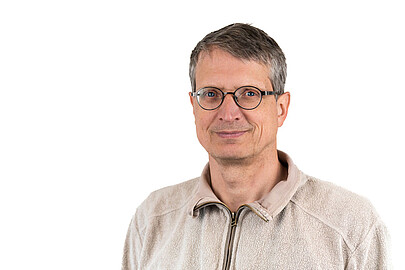Our Research
A PhoenixD vision that is linked closely to Area M is the Integrated Manufacturing Grid (Figure 1). A high degree of manual work steps is still typical for the production of many optical systems today. The Manufacturing Grid from PhoenixD represents a highly automated production environment for optical systems.
Inline production with roll-to-roll systems in particular allows cost-effective mass production. It is especially well suited for processes that operate under vacuum or inert gas conditions.
In the Manufacturing Grid, however, batch processes that run in independent systems are also integrated into the automated process chain. All production stations in the Manufacturing Grid are highly digitalised and supply a lot of sensor data on the current work piece, but also on the condition of the equipment.
On the one hand, this data is used to create a digital twin of the manufactured optical system. On the other hand, the comprehensive digital expert knowledge of the production history is used to introduce characteristics of the production environment into the development of the next optical systems by means of artificial intelligence. This approach helps to discover and utilize correlations, which are invisible for human experts.


 ©
Reinhard Caspary/PhoenixD
©
Reinhard Caspary/PhoenixD
A PhoenixD vision that is closely linked to Area F is the Smart Production Loop (Figure 2). Today, the design of optical systems is done digitally, increasingly supported by computer simulations. The results of the design process are control codes for the production machines and tolerance specifications for quality control.
PhoenixD strives for a paradigm shift in optics manufacturing, away from strict tolerance specifications of many abstract measurement parameters and towards functional specifications for individual components and entire systems. The result of the system design for PhoenixD's Smart Production Loop is an inline simulation that controls a production machine in real time.
For this purpose, the machine is equipped with extensive inline metrology that allows the real time simulation to calculate the optimal next production steps based on the current state of the individual work piece. From the extensive metrology data that accumulates together with each individual manufactured component, a virtual twin of the respective component and finally of the optical system is created.
Complemented by computing power and its own sensor technology, each manufactured optical system receives its individual virtual model that provides data and records new data over the entire lifetime of the system. Again, the goal is to generate digital expert knowledge that will be used in the design of future systems.


 ©
Reinhard Caspary/PhoenixD
©
Reinhard Caspary/PhoenixD
A PhoenixD vision that is closely linked to Area S is the Comprehensive Simulation Framework (Figure 3). In the context of steadily increasing computing capacities, the relevance of computer simulations continues to grow.
For research in PhoenixD, both commercial, freely available, and self-developed simulation software is used today. Each individual software package covers a specific sub-area of a large multidimensional parameter space relevant for the development, production and use of optical systems.
New materials are simulated at the level of atoms and molecules, while the functional description of optical systems usually takes place at the macroscopic level. On the temporal scale, PhoenixD simulates the interaction of ultrashort femtosecond laser pulses with matter, but also the material fatigue of optical components over their entire lifetime.
Multi-disciplinary simulations are becoming increasingly important, which, for example, include optical, thermal and mechanical properties of a system simultaneously. The vision of the Comprehensive Simulation Framework is to connect the many individual simulation environments in a network with uniform interfaces for use and data exchange. In the long term, the system should be able to answer questions in human language after automatically starting suitable simulations in the background and combining them with existing simulation results.


 ©
Reinhard Caspary/PhoenixD
©
Reinhard Caspary/PhoenixD
Contact


30167 Hannover







